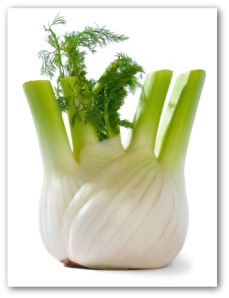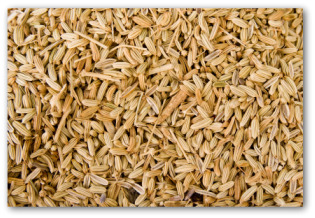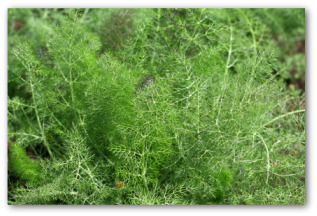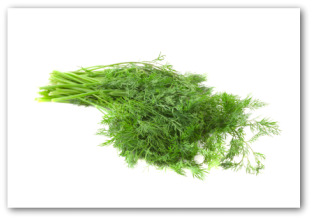Easy Tips for Growing
Fennel Yourself

Easy tips for growing fennel in a backyard vegetable garden, or herb garden.
Learn how to plant, care for, and harvest fennel leaves and seeds.
Design Your Own Vegetable Garden Layout Using our Free "Vegetable Garden Planner" Software!
Fennel is a grayish-green, strong-smelling perennial with slims stems that grow up to six feet, which bear soft lacy, dark green leaves.
Creeping rootstock slowly extends plants into sparse clumps.
Small mustard-yellow flowers appear in summer, followed by egg-shaped seedpods.
Past & Present Uses of the Fennel Plant and Seeds
This plant was considered a sacred herb by the Anglo-Saxons, used often by ancient Greeks and throughout the Middle Ages.
Roots were once boiled as a vegetable, and frequently used as an expectorant in cough medicines.
Dried stalks of fennel are an essential ingredient of Provencal cuisine.
Download Free Garden Planning Worksheets, Garden Diary, Zone Chart, Or Planting Guide
Soft tips of fennel are most often used to flavor and garnish soups, fish dishes, and baked goods.
Fennel tea is an effective treatment for colic and indigestion.
It is also a popular flavoring for liqueurs and as a scent for cosmetics and soaps.
Oil produced from the seeds is antibacterial.
In warmer regions, fennel attracts swallowtail butterflies.

The growing tips of fennel are used fresh or dried in early summer.
Leaves and stems may be cropped several times before flowering.
Seeds from seed-heads are cut in the fall before fully mature and dried.
Roots are dug in autumn and dried slowly.
A related species, sweet fennel is an annual cropped from the wild for its oils and cultivated as a vegetable for its juicy, swollen stem base.
How to Grow Fennel
- For lavish growth, light, moist soils are best for fennel.
- Winter rain may remove large amounts of lime and nutrients each year.
- Be prepared to feed or compost the soil annually.
- Divide roots in spring and plant in a warm, sunny location.
- You can alternatively sow seeds in spring or summer, either in pots or in-ground 20 inches apart.
- Wet clay soil always benefits from some improvements to open its texture and speed drainage.
- Although, fennel usually copes well with heavy soils, especially if the surface is mulched in summer to prevent drought and cracking.

Vegetable Gardening Tips for Fennel
- Transplant while still young because roots become long and tough.
- Water the growing fennel well in dry weather.
- The plant self-seeds freely, so dead-head if seeds are not needed.
- Growing fennel plants become congested and exhausted after 3-4 years, and are then best replaced.
- Avoid growing fennel near dill.
- These two species cross-fertilize readily to produce useless hybrids.
Planting a Small Border of Fennel
Herbs for the back layer that are 3 feet and upwards include perennials: angelica, Artemisia, elecampane, rosemary, sweet cicely, and fennel.
Herbs that need warmer conditions do well when planted along the base of a brick wall facing the sun, which remains warm even after nightfall.

Growing your favorite salad ingredients together in a separate bed creates an attractive miniature garden that can be harvested easily.
It only takes a few minutes to gather leaves of various lettuces, dandelion, lemon balm, and fennel for a connoisseur's salad.
Fennel Gripe Water
Used occasionally to aid digestion and soothe colicky babies, this gripe water is gently effective for babies, children, and adults.
Use 1 teaspoon of fennel seeds to 1-¼ cups water.
For a small child, after making, dilute the infusion with 2 parts water to 1 part gripe water.
It may be ingested warm or cold.
Crush the fennel seeds. Cover with boiling water. Leave to steep for about twenty minutes.
Strain the brew. Discard the fennel seeds.
Back To Top
Growing Fennel to Vegetable Gardening
You Might Also like to Read:

